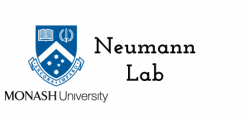This is a wonderful new format of journal which publishes small snippets of data. We have published three articles related to our recent PNAS paper (Abay et al. 2017). This data was required for the review process, but was not included in the final published article. We have used the Micropublication format to have this data, which would never have been published elsewhere, now publicly available.
In our PNAS paper, we found that the level of regenerative axonal fusion is increased with advancing age. Here, we investigated whether daf-2, a gene with a central role in mediating lifespan, was responsible for this modulation of axonal fusion. Our data demonstrates that daf-2 is not specifically involved in modulating the level of axonal fusion over age, but instead is required for axonal regeneration in general at specific ages.
See our publications page here for links to the articles.
See here for more information on the Micropublication: biology journal.


 RSS Feed
RSS Feed